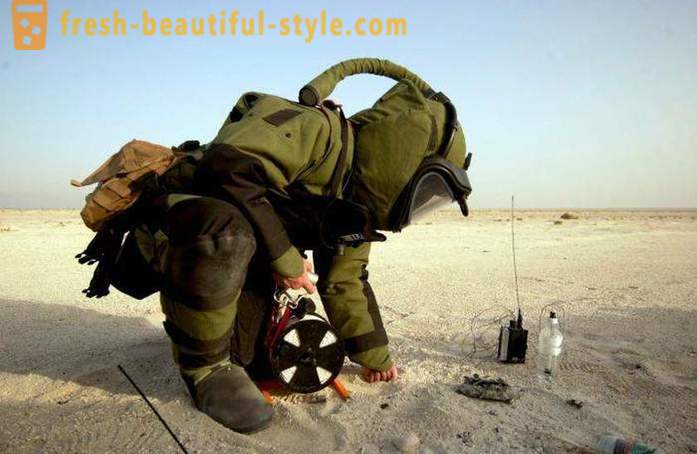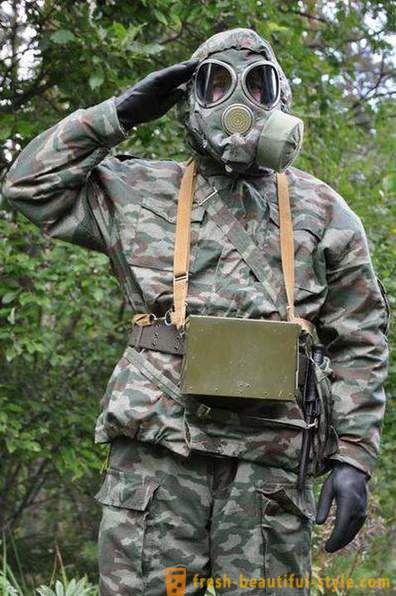Suit UGC: equipment and terms of use
Lightweight protective clothing UGC is widely used not only in the armed forces, but also in the national economy is almost on a daily basis. Fishers, pickers, hunters and diggers are suit for protection against water, cold, mud and wind.

This set of clothes is vital when infected premises or open areas of hazardous chemicals. UGC suit protects human skin from destruction by radioactive dust and gas mask, with which it is worn - the airway from the poisoned air of poison.
Costume UGC: Terms of Use
All the armies of the CIS applies a protective equipment, the kit which must include a gas mask or respirator, provided that no infection is severe and does not threaten human life. Cloak itself is not very heavy and protection in any weather, so the suit is so often used off-label, but for personal purposes.

No need to be in uniform is not recommended for a long time, as an airtight suit, respectively, the skin does not breathe under it, which can lead to diaper rash and other unpleasant consequences. A man without harm to health may be in a dress no more than four hours. The more that a full set of UGC along with shoes and stockings weighs about 1, 6 kg, and this weight on his shoulders for a long time can affect the overall human condition. The kit includes UGC:
- protective cloak OP - 1;
- stockings;
- Gloves (summer, winter).
What is in a raincoat?
UGC cloak is made so that, if necessary, with a few ribbons and rivets it is easily transformed into a comfortable suit, in which you can freely and easily move. Optional (depending on the purpose of protective clothing) includes also a field cap with a visor, headphones. This is necessary to protect the organs of sight and hearing a person present in the infected area.
Protective cape made of rubberized fabric stockings. This suit has:
- special rivets and ribbons;
- hood;
- two floors;
- pegs;
- strap.
UGC wear a suit everyday clothing, including stockings on canvas or rubber soles. Also for fishing and hunting use shoe covers UGC, they are also very fond of motorists, many of whom they are in the car all the time. Shoe covers to protect not only in the summer on the water, but in winter fishing. Be in the water without the risk can soak your feet for a long time people.
Shoe combined-arms protective suit
UGC overshoes worn over shoes and fastened at the ankle, shin and knee belt. This allows them to fit snugly to the legs and, accordingly, do not shoot at the wrong time. All people are different in height, weight and body type, so the suit has 4 standard sizes.

On the infected area UGC suit worn strictly according to instructions, first put on stockings, fastened strap, is followed mask, gloves, cape sleeves. Further throw hood and fastened bead coat.
Removed the infected suit as a team, without touching the exposed portions of the PCD body. It is necessary to turn to face the wind, and undo the cloak. Then remove the stockings and the loop with your fingers, folded back the hood and fold clothes back.
Types of protective clothing
UGC is of several types: Combined Arms upgraded kit (UGC-M), landing (OKZK-D). In a first embodiment, the kit includes protective visors to conceal the hands, the composition of the tissue infiltration intensified. OKZK-D consists of a light summer jacket, trousers and caps. Sleeves and pants slimming elastic band strap and rivets. Masks, respirators and other protection from inhaling poisonous gas are in any kit.













































